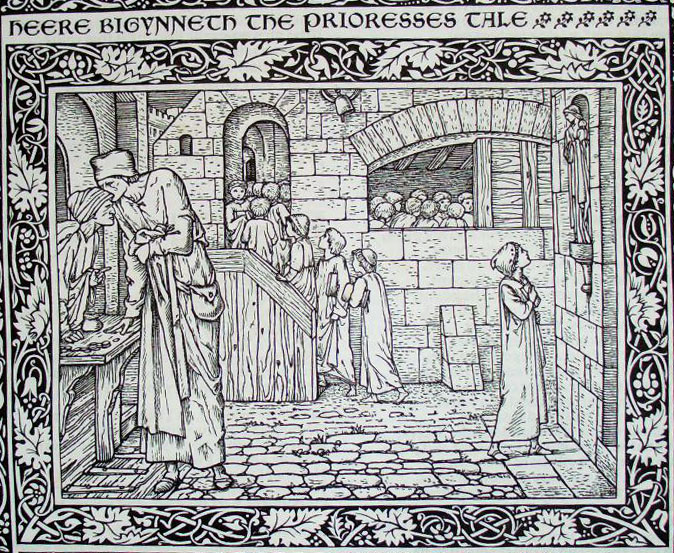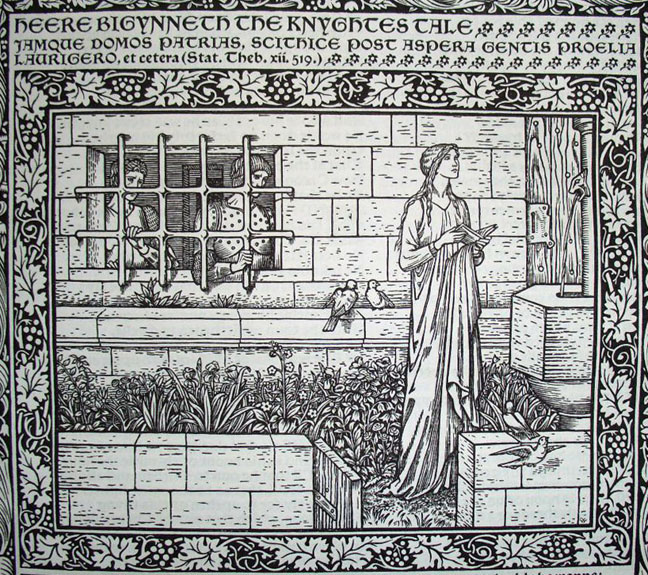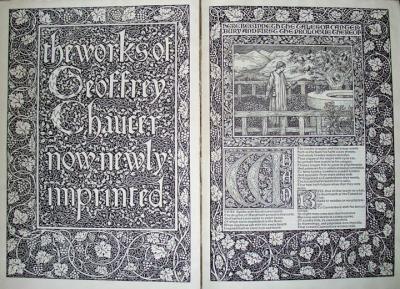In 1891, William Morris founded the Kelmscott Press in an effort to realize his vision of creating exquisitely crafted books. Joining him in this endeavor was his longtime friend Sir Edward Burne-Jones, who contributed over one hundred designs to Kelmscott Press editions. The books they created were unique in their craftsmanship and beauty, which you can see in this video of the Kelmscott Chaucer. It’s a bibliophile’s dream.
Burne-Jones famously described the Kelmscott Chaucer as a ‘pocket cathedral’. It’s an apt description given the painstaking devotion Morris gave to each element of his books. Morris, as ‘pocket cathedral’ architect, constructed in each Kelmscott Press book an example of harmonious typography and illustration. His pursuit of the perfect typeface, balanced margins, and use of woodcut illustrations all work in tandem to create his signature ornamental pages. Bibliophiles will find in these pages the same majesty and inspiration as is found in a Gothic cathedral. Reading these works elevates us, lifting us up to the realization that this is what books can be: exquisitely crafted objects of great beauty.The creation of each book was more than simple book-binding, it was an act of reverence for not only the written word, but how those words are presented.


I identify with Morris and his sense of being born in the wrong era. For him this was not merely a passing interest in all things Medieval, it was an all-consuming passion that fed his creative drive. Instead of sitting idly while longing for another time, he actively pursued the elements of Medievalism that he felt were lacking in the age of Industrialism, His intense longing for that by-gone world coupled with his discomfort for modern society culminated in unique designs and craftsmanship that are now synonymous with his name. His pocket cathedrals, rare and beautiful, are among William Morris’ greatest gifts to the world.

